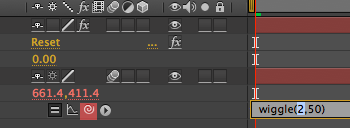
If your grid has a different size in X and Y direction, use the Snapping Wiggle 2D, if the grid size is the same in all dimensions, you can also use the 1D variant. For example, if you apply wiggle() to the position property of a 3D layer, the result will be an array of three elements (one each for x, y, and z). Due to the smoothness parameter, they do not jump abruptly from one grid cell to the next cell, but travel there smoothly. One of the most important things to understand about wiggle() is that the result it generates has the same dimensions as the property to which its applied. In contrast to the Basic Wiggle, with the Snapping Wiggle the layers stay on the grid. Here we applied the Snapping Wiggle 1D to a lot of semi transparent solid layers. Due to the smoothness parameter, the rotation does not jump from one step to the next one, but still travels smoothly. In contrast to the simple wiggle, the rotation is not continuous, but consists of fixed degree steps. Here we applied the Snapping Wiggle 1D expression to the rotation of the different layers. The 2D and 3D variants are useful to move layers along a grid, the 1D variant can be used, for example, to rotate elements.

So instead of a continuous movement, the wiggle happens in steps of a customable step size.

These expressions are like a combination of a Wiggle expression and a Snap to Grid iExpression.


 0 kommentar(er)
0 kommentar(er)
